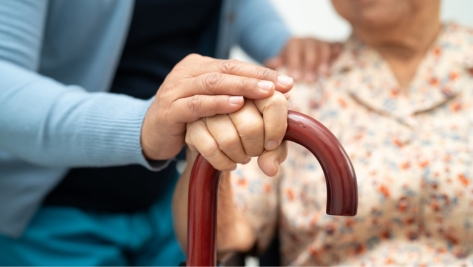Cyclists and Pedestrians – New Highway Code Rules

New Highway Code Rules Regarding Cyclists and Pedestrians
The Highway Code has recently been updated to include new rules which introduce a new hierarchy of road users, meaning that cyclists and pedestrians now have greater protection when using the roads. The hierarchy puts road users who are most at risk at the top. However, this has not been as widely publicised as it perhaps needs to be and there are still a lot of road users who are not as au fait with the new rules as they should be. This could in turn lead to an increase in road traffic collisions, as motor vehicle drivers start to get to grips with the new rules offering further protection to cyclists and pedestrians.
The new rules came into effect on the 29 January 2022, but not with the sort of fanfare that would have been required to bring these changes to the forefront of the minds of all road users. Three of the key changes, referred to as Rules H1, H2 and H3 are as follows:-
Rule H1 – It is important that ALL road users are aware of The Highway Code, are considerate to other road users and understand their responsibility for the safety of others.
Everyone suffers when road collisions occur, whether they are physically injured or not. But those in charge of vehicles that can cause the greatest harm in the event of a collision bear the greatest responsibility to take care and reduce the danger they pose to others. This principle applies most strongly to drivers of large goods and passenger vehicles, vans/minibuses, cars/taxis and motorcycles.
Cyclists, horse riders and drivers of horse drawn vehicles likewise have a responsibility to reduce danger to pedestrians.
None of this detracts from the responsibility of ALL road users, including pedestrians, cyclists and horse riders, to have regard for their own and other road users’ safety.
Always remember that the people you encounter may have impaired sight, hearing or mobility and that this may not be obvious.
Rule H2 – Rule for drivers, motorcyclists, horse drawn vehicles, horse riders and cyclists
At a junction you should give way to pedestrians crossing or waiting to cross a road into which or from which you are turning.
You MUST give way to pedestrians on a zebra crossing, and to pedestrians and cyclists on a parallel crossing (see Rule 195).
Pedestrians have priority when on a zebra crossing, on a parallel crossing or at light-controlled crossings when they have a green signal.
You should give way to pedestrians waiting to cross a zebra crossing, and to pedestrians and cyclists waiting to cross a parallel crossing.
Horse riders should also give way to pedestrians on a zebra crossing, and to pedestrians and cyclists on a parallel crossing.
Cyclists should give way to pedestrians on shared use cycle tracks and to horse riders on bridleways.
Only pedestrians may use the pavement. Pedestrians include wheelchair and mobility scooter users.
Pedestrians may use any part of the road and use cycle tracks as well as the pavement, unless there are signs prohibiting pedestrians.
Rule H3 – Rule for drivers and motorcyclists
You should not cut across cyclists, horse riders or horse drawn vehicles going ahead when you are turning into or out of a junction or changing direction or lane, just as you would not turn across the path of another motor vehicle. This applies whether they are using a cycle lane, a cycle track, or riding ahead on the road and you should give way to them.
Do not turn at a junction if to do so would cause the cyclist, horse rider or horse drawn vehicle going straight ahead to stop or swerve.
You should stop and wait for a safe gap in the flow of cyclists if necessary. This includes when cyclists are:
- approaching, passing or moving off from a junction
- moving past or waiting alongside stationary or slow-moving traffic
- travelling around a roundabout
The overriding message here remains that all road users are required to proceed with extreme caution in respect of their awareness of and duty of care towards all other road users. However, in this update to the rules, vehicles and even cyclists now must give way to any pedestrian who is either crossing or waiting to cross a road into which or from which the vehicle or cyclist is turning. This is a significant change to the rules, which could very well see an increase in accidents in which the vehicle driver or cyclist is deemed liable. I have dealt with many claims for clients who were crossing a road when they were run over and in which there have been disputes on liability, but in light of this new rule, we should now see less and less cases of liability being contested in such cases, as this particular requirement is weighted so heavily in favour of the pedestrian.
By the same token, I have dealt with many claims for cyclists, motorcyclists and other car drivers who have been badly injured when a car turning into or out of a junction has turned right across their path, giving them no chance to avoid a collision. With the introduction of Rule H3, there is once again a far greater onus on the road user performing the turn to only do so when it is completely safe. This will no doubt continue to be a factor which will be determined on the basis of the evidence on a case-by-case basis, as what one person deems to be a safe gap in the traffic may not be deemed safe by another. However, there is now a greater duty on road users to keep this in mind when making a turn, with the rules once again being weighted more in favour of the more vulnerable.
One potential issue I foresee is where a driver slows down and then stops to let a pedestrian cross a road that he or she is turning into, for example, but the driver behind that car is not paying sufficient attention and drives into the rear of the turning but stationary car. Ultimately, primary liability will always rest with the second car, but until ALL road users become completely familiar with this particular rule, I can see this being a fairly common type of accident, as drivers have previously always had right of way when making a turn, with pedestrians usually having to wait until it is safe for them to cross.
There are also some further new rules regarding cyclists which could potentially cause more problems than solve them. For example, cyclists are now able to ride in the centre of their lane on quieter roads, in slower-moving traffic and at the approach to junctions or road narrowings and they are now able to ride at a distance of at least half a metre from the kerb on busier roads where there are vehicles travelling at faster speeds than they are. I can certainly see situations whereby impatient drivers looking to get past these cyclists but being left with less room to do so safely still overtake the cyclist and in doing so, encroach even further into the opposite lane of traffic.
In summary, these rules have been introduced with a view to affording more protection to the most vulnerable of road users. However, as with any new rules, it will take some time for everyone to become completely familiar with them and in the intervening period, we could well see an increase in accidents befalling these most vulnerable of road users.
Please note
The information on the Anthony Gold website is for general information only and reflects the position at the date of publication. It does not constitute legal advice and should not be treated as such. It is provided without any representations or warranties, expressed or implied.
Related Insights
- October 26, 2021
Vulnerable witnesses
- August 16, 2021
The fallibility of witness evidence
- March 30, 2021
Covid-19 and personal injury practice: What have we learned?
Our Latest Injury & Medical Claims Insights
- October 6, 2025
Jess’s Rule – a welcome reminder to reconsider persistent symptoms
- September 26, 2025
Intermediate track injury claims: the rise of early settlement offers
- August 26, 2025
Anthony Gold Solicitors welcome Helen Whittam as a new Support and Rehabilitation Coordinator in the Injury and Medical Claims Team
- August 19, 2025
Contributory negligence and children
- August 13, 2025
Video: From tragedy to triumph – Eliezer’s journey after a life-changing accident
- July 9, 2025
What is Contributory Negligence and How Could it Affect Your Claim?
Latest Articles
View allGuide: October 9, 2025
Guide: October 8, 2025
Contact the Conveyancing team today
Contact us today
"*" indicates required fields
Contact the commercial
& civil Dispute team today
"*" indicates required fields
Contact the Conveyancing team today
Contact the Conveyancing team today
Contact the Wills, Trusts
& Estates team today
Contact the Court of
Protection team today
Contact the Employment Law team today
Contact the Clinical Negligence team today
Contact the Family & Relationships team today
Contact the Personal Injury Claims team today
Contact the leasehold & Freehold team today
Contact the Corporate & Commercial team today
Contact the housing & disputes team
"*" indicates required fields















